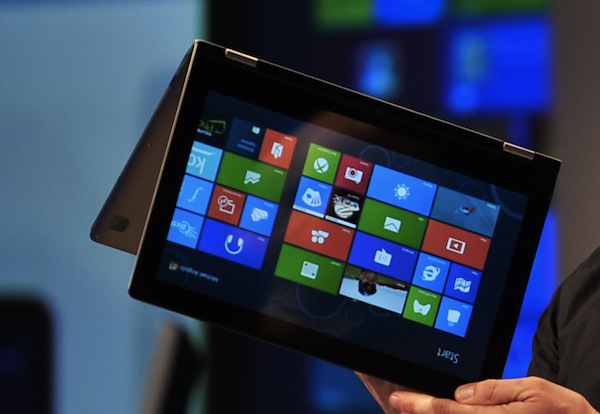Windows 8 Metro is pointless for the enterprise

Yesterday Betanews published an interesting piece looking at how successful (or not) Windows 8 will be in the enterprise market. One of the areas it questioned was just how well the Metro UI would go down with end users in the workplace.
This reminded me of a concept that seems to have been much forgotten since we all fell in love with the touch screen. It is called Gorilla Arm. The term was coined over 30 years ago by engineers looking for a way to describe how users actually interact with vertical touchscreens in the real world. Basically users arms get sore and heavy when using these types of interface for extended periods of time. It is not a new phenomenon, far from it, and has been backed up by numerous interface and usability researchers for decades. Try it yourself now whilst sitting at your desk. Reach out and stab at your monitor. Then keep doing it. After a period of time your arms will feel like a gorilla's. So how is the Metro UI going to cut it with enterprise audiences?
Well, the obvious answer is on tablets, like the recent Surface. Gorilla arm doesn't come into play when you hold a tablet. A tablet running Windows 8 and Metro will be a joy to behold, I’ve no doubt (well, almost no doubt). No one questions the concept of a tablet here. But on a desktop machine, or laptop, it is a different game altogether.
Let us make a quick detour to the world of Apple (this is an enterprise article, I promise). The next release of their operating system (Mountain Lion) is due out anytime. Amongst other things this release continues the trend of incorporating elements of iOS. Apple is effectively blending the two operating systems, and many people expect their MacBooks to operate more and more like iPads in the near future. Except you won’t be able to prod the screen on your Macbook Pro or Air anytime soon. Apple declared touchscreens off limits for its laptops back in October 2010. Former CEO Steve Jobs had this to say on the topic: "We’ve done tons of user testing on this, and it turns out it doesn’t work. Touch surfaces don’t want to be vertical".
The latest MacBooks, released a few weeks ago, incorporate lots of new features. They don’t, however, go near touchscreens.
Okay, back to Microsoft. Does it really expect us all to sit at our desks prodding away at our screens? Does it expect us to sit on a train swiping around Metro on our laptops? It might look great in product demos and in adverts, put Gorilla Arm means it isn’t going to happen in reality.
No, Metro will find its niche on tablets, and on nice big screens in boardrooms (like those made by Perceptive Pixel which Microsoft just bought), but as far as enterprise customers go it will be the standard Windows interface all the way. And that is truly a good thing.
